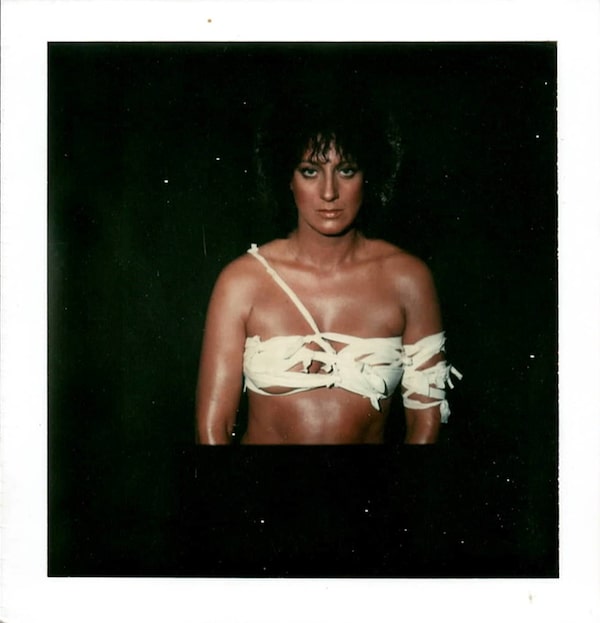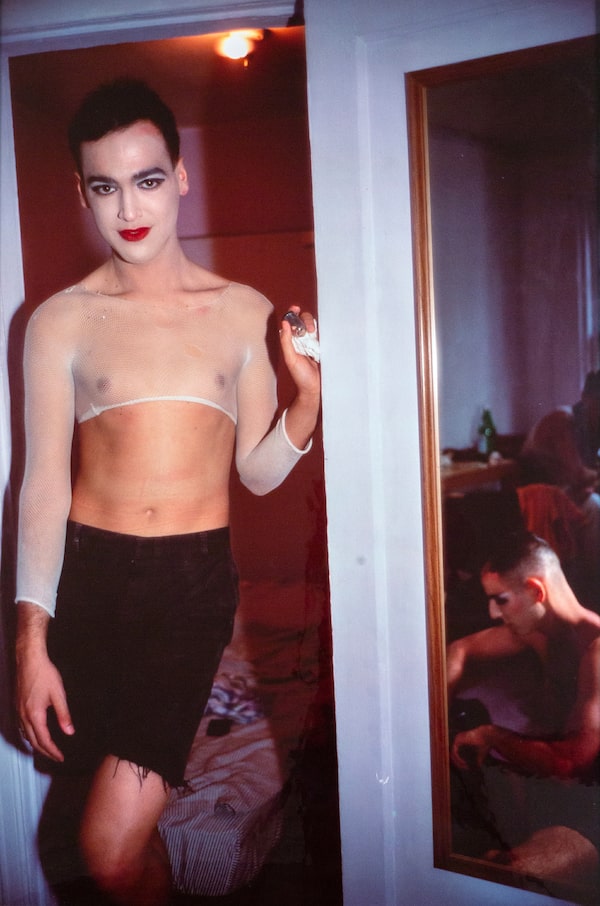Laura Hudspith, en- /un- /-en, 2020.Zalucky Contemporary
There will be no virtual programming at Art Toronto this year. After a hybrid 2021 and an online-only 2020, the Canadian art fair bounds back into the Metro Convention Centre with more than 90 booths and a determinedly postpandemic attitude.
“Audiences are so excited to come back and see art in person,” said fair director Mia Nielsen. “New audiences that were dipping a toe into art collecting during lockdown [by buying online] are just as excited, if not more so, to come out to the show … continue conversations and connect with galleries.”
While public galleries and museums struggled with enforced closures, the art market did just fine during the pandemic. With no ability to travel, collectors had money to spare and were eager to buy more art for the homes in which they were now spending so much time. (Nielsen notes that, unlike a renovation, art offers instant gratification.) Newer collectors in particular seemed happy to embrace online viewing and buying. So, the art fair returns more with a sense of celebration than recovery.

General Idea, Weapons' Photoshoot, 1983.General Idea/United Contemporary/Courtesy Carole Pope
Nonetheless, there’s streamlining in the works. The one obvious loss is the opening night fundraiser for the Art Gallery of Ontario, a glitzy cocktail party that offered privileged access for collectors willing to pay the ticket price. The AGO is still a partner of the fair, committed to buying some art from exhibitors, but the gallery decided back in February, when reopening seemed less certain, to cut the big event. Instead, Art Toronto is offering an invitation-only preview for collectors on Thursday before opening to the general public Friday.
Also, with about 90 booths, the 2023 fair marks a drop from the 115 that were on offer in 2019, but a step up from the 65 participants last year. In 2021, several dealers decided it was better to do small events in their own galleries rather than risk the Convention Centre crowds, and the fair could only fill two-thirds of the exhibit hall in the centre’s north building. This year it’s back to filling the entire 17,000 square metres of space but with a more airy layout.
That actually plays to Nielsen’s continuing campaign to give Art Toronto a little more the atmosphere of a gallery and little less that of a bazaar.
“A fair is a marketplace. However fairs are also really important research opportunities for curators. Museums also acquire [art] from fairs,” she said. “I really wanted to find a balance, between the hustle, the energy, but also this is a site for understanding work from a Canadian perspective.” She points out that public institutions, including the Art Gallery of Hamilton and the McMichael Canadian Art Collection, choose to have booths alongside the many commercial galleries while museums such as the Montreal Museum of Fine Arts and the AGO send their curators to browse.

Nan Goldin, Jimmy Paulette and Tabboo! undressing, NYC, 1991.Nan Goldin/Caviar20
Nielsen’s biggest effort at curating the experience this year is a new Focus Exhibition, designed to replace the showcase of work from a single guest country – in 2019 it was Portugal – with a selection that places Canadian art in an international context. Entitled held open, the exhibit will be curated by Marie-Charlotte Carrier, a Canadian curator based in London, and will cherry pick works from participating galleries to investigate human intimacies and our relationships with the non-human, whether that’s technology or nature.
Carrier has selected art by Canadian up-and-comers such as Toronto multimedia artist Laura Hudspith, Montreal glassmaker and photographer Lorna Bauer, Toronto installation artist Laurie Kang, the Inuvialuk artist Maureen Gruben and Halifax figurative painter Preston Pavlis, as well as veterans such as the American artist Alicia Henry. The show will also include some older work, such as images of the LGBTQ community dating as far back as the 1980s by the American photographer Nan Goldin and a series of 1980s Polaroids of singer Carole Pope by the Canadian collective General Idea.
Meanwhile, talks and panel discussions are back. That program launches Friday afternoon with an interview with Cecilia Alemani, the art curator for New York’s High Line park and of this year’s Venice Biennale, where the group exhibition included Canadian artists Shuvinai Ashoona and Gabrielle L’Hirondelle Hill.
Forget Zoom, Alemani will be appearing in person, of course.
Art Toronto runs Oct. 27-30 at the Metro Convention Centre.
 Kate Taylor
Kate Taylor